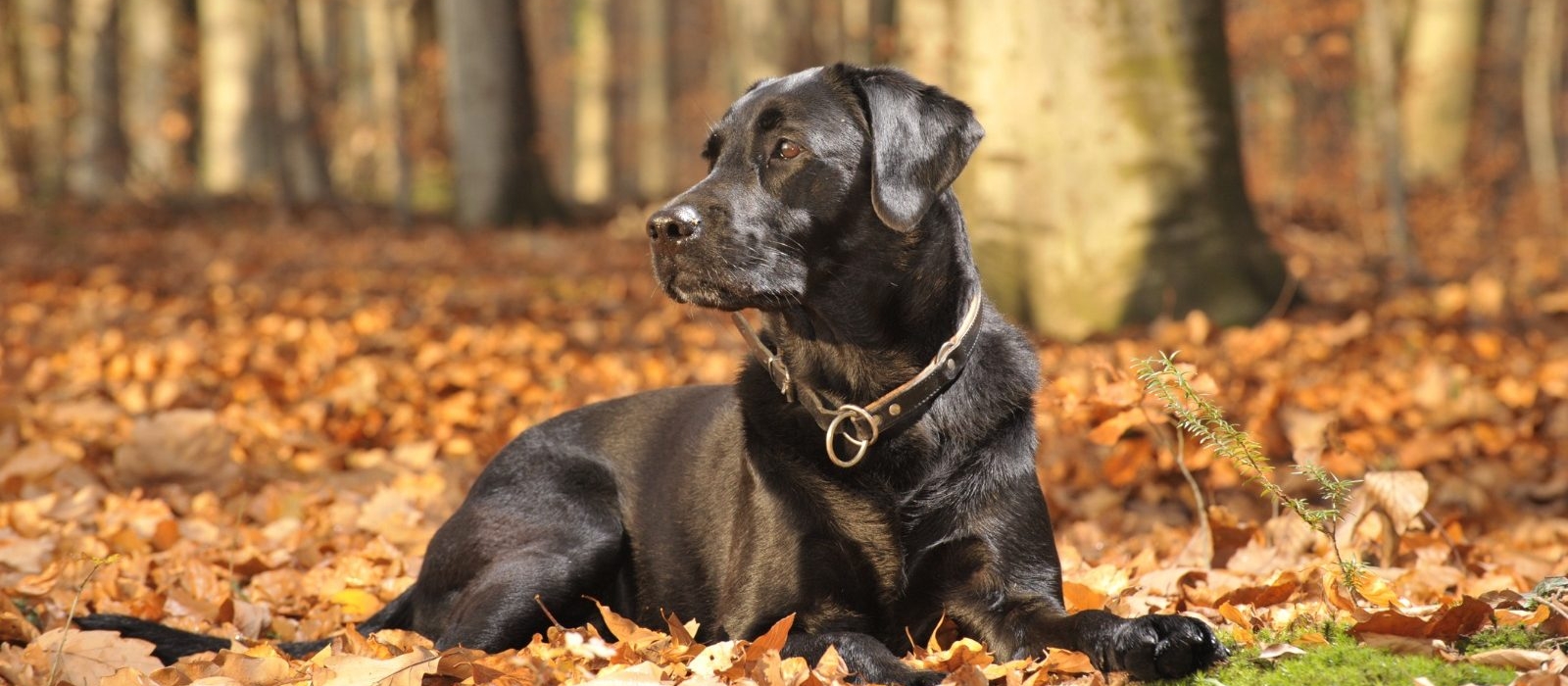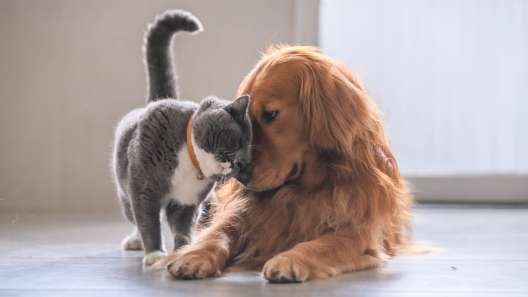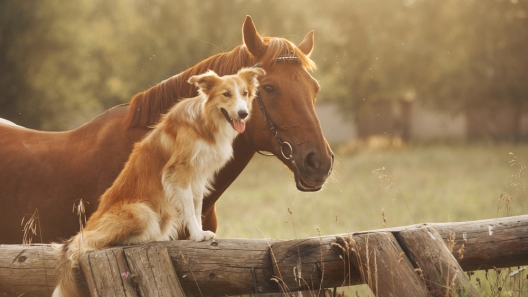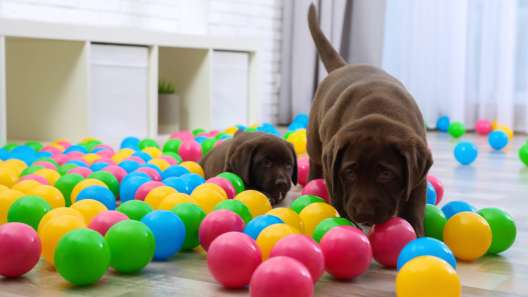-
Activity Level:
high
-
Shedding Level:
high
-
Grooming Level:
low
-
Trainability:
high
-
Good for Novice Owners:
high
-
Adaptability:
high
-
Kid/Pet Friendly:
often
-
Prey Drive:
low
-
Watchdog:
aware
- Average Size: Medium
- Average Lifespan: 11-13 years
- Registered?: aca, akc
Black Labrador Retriever Dog Breed Information
Overview
Temperament
Adaptability
Health
Owner Experience
Grooming
Activity Level
Size
Life Span
Did You Know?
Black Labrador Retrievers, or just Black Labs, are a common coat color variation of one of the most popular dog breeds. The Black Labrador Retriever is not necessarily a separate dog breed. Black Labs are still Labrador Retrievers; they just have a distinct coat color that is a specifically-bred characteristic.
Like other Labrador Retrievers, Black Labs are energetic, playful, and affectionate dogs that make great family companions. They’re also one of the dog breeds that make great service dogs and can be found working as guide dogs, police dogs, military dogs, search-and-rescue dogs, and more.
Although they are active and energetic dogs, Labs are also known for their gentleness and patience with other family members. Well-socialized Black Labs tend to get along well with just about everyone including children, other dogs, pets, and even strangers. They are considered one of the kid-friendly dog breeds.
As one of the most affectionate dog breeds, Black Labs thrive on attention, especially from their favorite humans. They are happiest when they are spending time with their families and receiving affection and attention from them. It’s usually a bonus if they also get to be active and play while doing it.
Despite their high energy, Labs are highly adaptable dogs. They do tend to be better suited to homes with fenced yards where they can run, but they also adapt well to apartments provided they get enough daily exercise, attention, and mental stimulation.
They do well in just about any climate, but are sensitive to heat and extreme cold like many dog breeds. Although they aren’t necessarily a “velcro dog” that requires your attention every second of the day, they do bond closely with their families and prefer to be with them. As such, they do not like to spend long periods of time alone.
Potential health concerns to be aware of in a Black Labrador Retriever can include elbow dysplasia, hip dysplasia, heart disease, hereditary myopathy, cataracts, and progressive retinal atrophy. Another potential health concern is EIC (exercise-induced collapse), which can occur in young adult Labs and has a genetic link. Because carriers can be identified by DNA tests, it is recommended that breeders test for them.
Good breeding practices make a big difference in the health of puppies and reputable breeders will screen their dogs to avoid passing preventable issues to puppies. Make sure you talk to the breeder about the health and genetic history of both parents. You can also ask about any health tests or clearances that have been done. Minimum recommended health tests per the National Breed Club include an EIC DNA test, an ophthalmologist evaluation, and a hip and elbow evaluation.
As a large, deep-chested dog breed, Labrador Retrievers are at a higher risk for bloat. Because bloat in dogs can be dangerous and quickly becomes fatal if the stomach flips (gastric torsion), it’s important to know how to reduce the risk and what symptoms to look for so you know when to get help.
Labrador Retrievers are one of the best dog breeds for first-time owners. Although their high energy and puppylike exuberance can sometimes be a challenge, they are intelligent dogs that are eager to please.
As long as training is kept consistent and focused on positive rewards and praise, novice owners still tend to do well with Black Labs. Puppy training classes are always an option and offer plenty of benefits aside from training too.
Black Labs have a short, water-resistant double coat that sheds year-round and sheds heavier as seasons change. Brushing a few times a week and the occasional bath as needed are enough to keep a Lab’s coat healthy and looking great.
Depending on how active your Black Lab is and what they get into, they may need a bath more often, especially if they are swimming a lot. It’s also not a bad idea to brush daily during seasonal shedding.
In addition to coat care, you will also need to take care of your Black Labrador Retriever’s nails, ears, and teeth. Cutting your dog’s nails once or twice monthly keeps them from growing too long and causing issues.
Weekly ear checks and careful cleanings when needed help prevent ear infections. Good dental care for dogs, like daily brushing and cleanings at the vet when needed, can help prevent painful dental diseases later in life.
As one of the most active dog breeds, a Black Labrador Retriever will need a lot of daily activity to be happy and healthy. Daily walks plus some playtime and time to run are a minimum. Your Black Lab will likely be up for more activity if you are. They’ll just be happy to be spending time with you and being active.
One of the facts about Labrador Retrievers is that they have an extended puppyhood. They tend to maintain a puppylike exuberance until they are 2-3 years old. Although they do tend to mellow out as they get older, they are still active, energetic, and playful dogs.
It’s also recommended to keep activities low-impact until puppies finish growing and their bones are done developing. Swimming is a great low-impact activity and since Labs are one of the dog breeds that tend to love water, it’s usually a win-win. Once they are fully grown, you can try other things like hiking, running, dock diving, and more to find other activities you and your Black Lab can enjoy together.
Fully-grown Black Labrador Retrievers usually stand 21-25 inches tall and weigh 55-80 pounds.
Black Labs generally live for 11-13 years on average.
Black Labrador Retrievers came before the also-popular Chocolate Lab. All modern Chocolate Labs can be traced back to three Black Labs in the 1880s.
A Black Labrador Retriever named “Blind of Arden” was the first dog to appear on the cover of Life magazine. It was the December issue of 1938.









